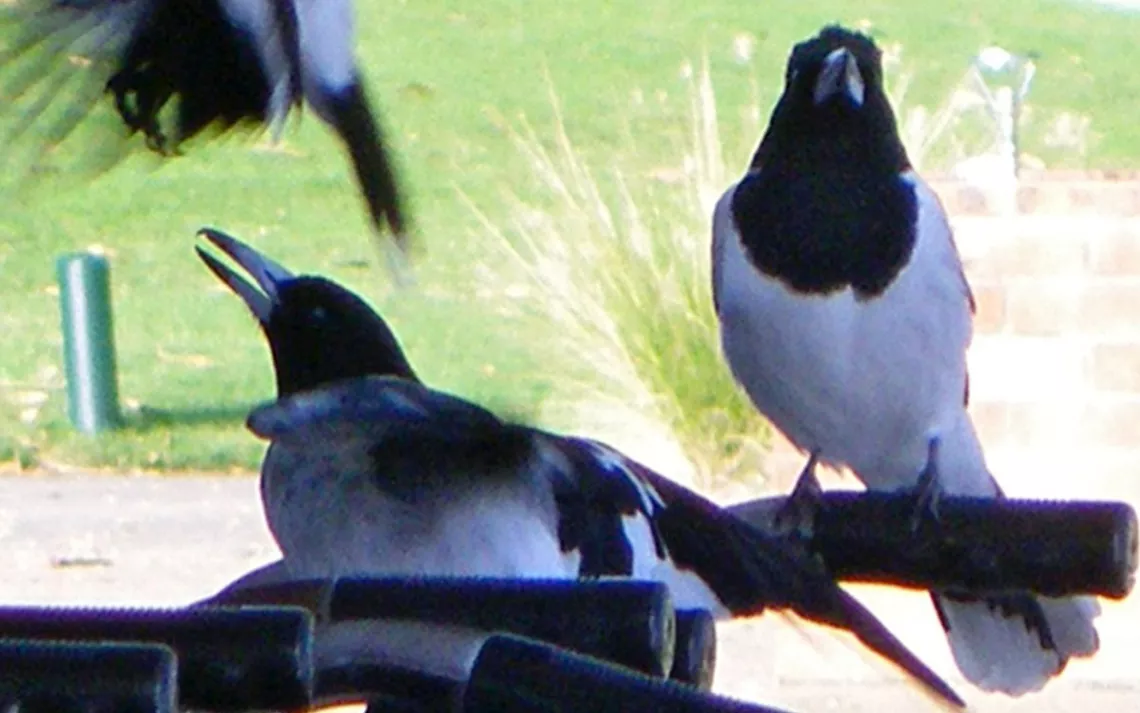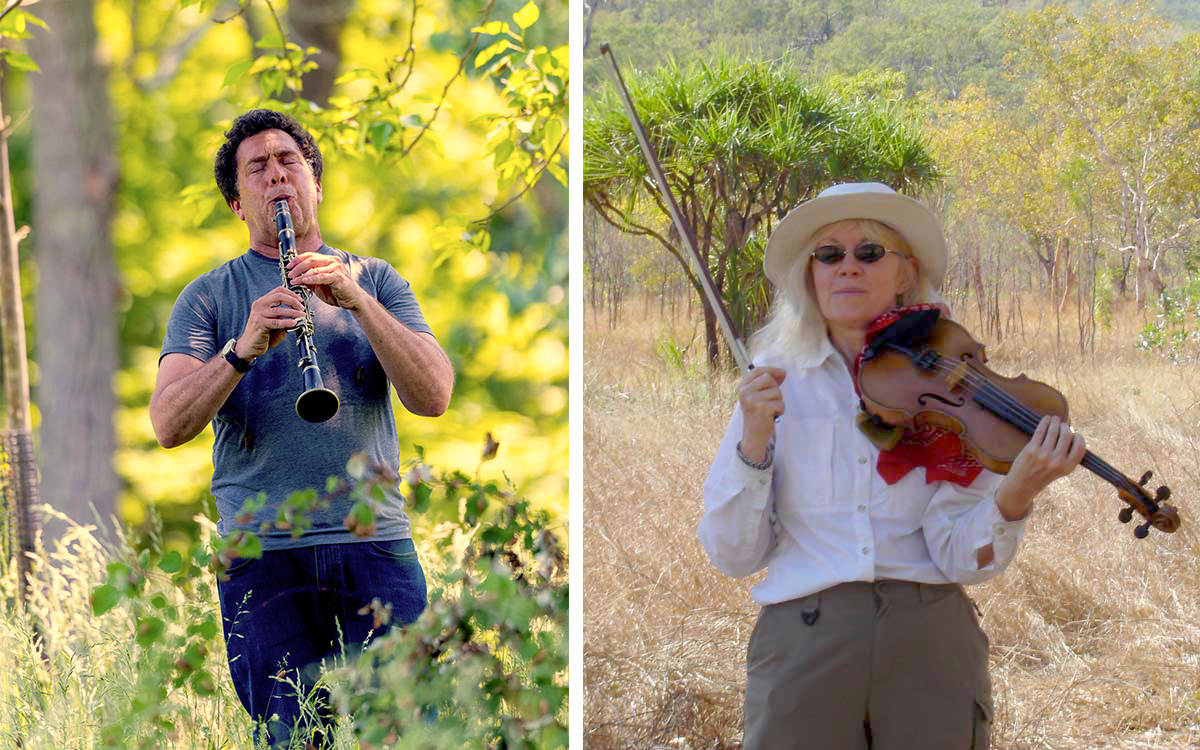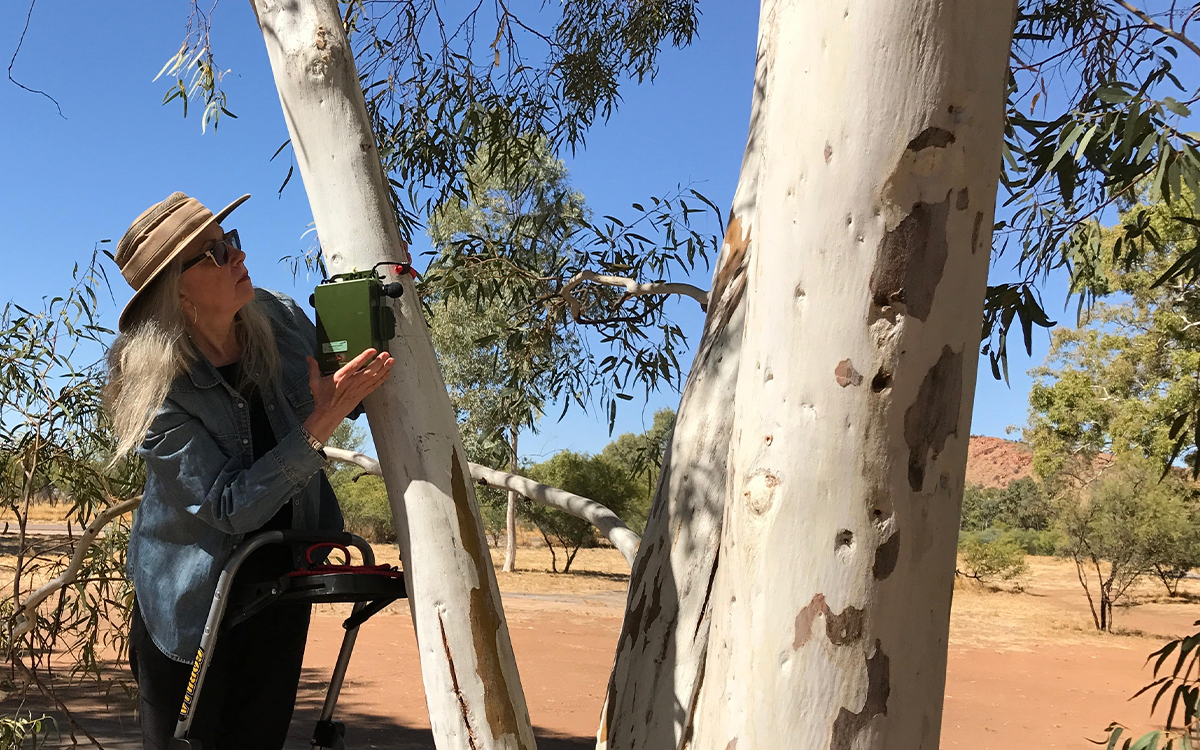Playing to the Beat of the Birds
Podcast: Composers and musicians who draw their inspiration from birdsong

Australian pied butcherbirds are among the most "musical" birds, as we define it, given their melodic songs, singing behaviors, and ability to compose individual songs. Hollis Taylor says she has observed the birds conducting what appear to be warm-up sessions, singing lessons, and duets. | Photo by Hollis Taylor
| Listen to the full story: |
Violinist Hollis Taylor has a unique way of composing music. She follows the lead of the birds in her backyard.
Taylor moved to Australia after she discovered the melodic songs of the Australian pied butcherbird, a native songbird. She hikes into the outback with a tape recorder at odd hours of the night—when the birds like to sing—and later transcribes their songs into musical notation that can be played on human instruments. It’s a technique tied to the concept of zoomusicology, a term invented by French composer François-Bernard Mâche to describe the study of music in the animal world.

Professional musicians David Rothenberg, left, and Hollis Taylor, right, take different approaches to integrating birdsong into their music. Rothenberg plays his clarinet among wildlife, such as cicadas, as pictured. Taylor records Australian pied butcherbirds and transcribes their notes into musical notation, then plays the music on her violin. | Photo by David Michael (L) and Photo by Jane Ulman (R)
There’s scientific support for the ways in which human and bird music is similar, suggesting why musicians like Taylor can identify musical elements in birdsong. But she’s not the only modern composer paying musical homage to the bird world.
David Rothenberg, a renowned musician and composer, takes a different approach. He plays with animals—not just birds but cicadas and whales too. Rothenberg travels the world to play symphonies with animals as his band members. Along the way, he has noticed some interesting parallels with our own human-made music: Sped-up whale song, for instance, sounds less like long bellowing calls and more like a ballad. And slowed-down birdsong echoes the same patterns. Rothenberg, a professor of music and philosophy at the New Jersey Institute of Technology in Newark, believes it’s more than similarity. In his view, birds and other animals might use music as a way to express emotion, like humans do.

Hollis Taylor installs tape recorders in the trees near Australian pied butcherbird habitat so she can capture their nocturnal songs. | Photo by Kiera Ezell
And there’s another method too: Making music straight from the bird’s mouth. Michael Colin, a retired filmmaker, makes music from birdsong using digital technology in a project he calls Birdhoven. Unlike Taylor and Rothenberg, Colin doesn’t compose music—he lets the birds do that themselves. He uses MP3 recordings of the double-crested cormorant, for example, or the Hawaiian petrel. Then, he converts the file into what’s called musical instrument digital interface, which transcodes the sounds as binary code. Colin imports this MIDI file into an audio-editing program like Pro Tools, where he can assign instruments to the notes. He might tweak the speed or synchronize the sounds in what’s called quantizing, a tool that snaps notes to a more rhythmic structure. But the composition stays exactly the same as the birds sang it.
The final product sounds like a chaotic version of a movie soundtrack. Colin dubs the Himalayan Snowcock the “Hitchcock” bird, for its song reminiscent of an Alfred Hitchcock film.
Learn more about the techniques each of these musicians uses—and why—in this podcast featuring the avian sounds that inspired their musical creativity.
 The Magazine of The Sierra Club
The Magazine of The Sierra Club



